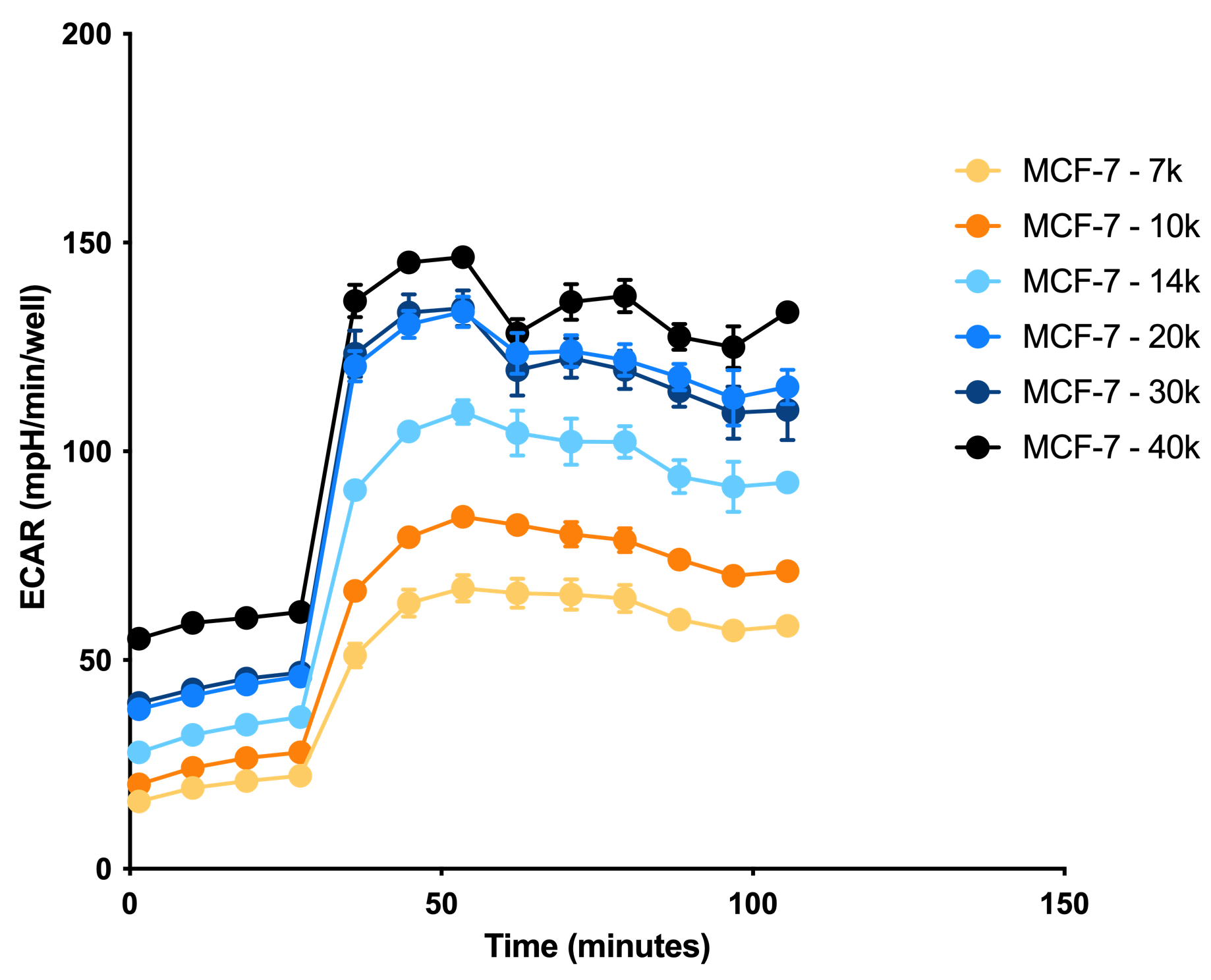BioCELL optiMIZE
Characterise the optimal cell seeding density and metabolic profile of your cells to be used in our bioenergetic assays.
Characterisation of cell seeding density using XF analysis.
Identifying the optimal cell density for XF analysis is key to achieving reliable and reproducible data from bioenergetic measurements. Optimal cell seeding densities for XF analysis can vary between 5,000 cells/well to 10 million cells/well depending on the cell type and experimental design being used. Our BioCELL optiMIZE assay characterises seeding density using basal and maximal oxygen consumption rate (OCR) and extracellular acidification rates (ECAR) values from a typical metabolic profiling test. We examine both OCR and ECAR profiles to help inform optimal cell seeding density for a given cell type.
To ensure data accuracy and precision, we calculate the linearity of basal and maximal measurements for OCR and/or ECAR against cell sending density. We then compare OCR and ECAR values against lower and upper reference measurement points. When deciding between seeding densities that have basal OCR and/or ECAR values within the reference range, we select a cell density that would allow for basal values to be increased and decreased by at least 50%, but still fit within the upper and lower reference ranges.
Confirming the sensitivity limits of XF analysis for cell model optimisation.
We also assess the feasibility of real-time cellular metabolic profiling for your cell type.
Our feasibility test assesses the cells ability to respond optimally under different mitochondrial energetic demands and capacities. Uncouplers are used in many real-time bioenergetic tests to induce an artificial energetic demand for measurement of maximal mitochondrial respiratory capacity. However, cells can have varied responses to mitochondrial uncouplers and susceptible to uncoupler-induced cytotoxicity. Mitochondrial inhibitors that are typically used prior to uncoupling in such assays can also restrict substrate oxidation, leading to underestimation of maximal and consequential spare respiratory capacity. This is the case with the human microglial HMC3 cell line, whereby HMC3 cells tolerate BAM15 but not FCCP, and oligomycin inhibition of ATP synthase restricts maximal mitochondrial OCR.
Key Features.
-

Real-time kinetic measurements
-

Live cell samples
-

Data optimisation
-

Feasibility testing
-

Multi-parameter analysis
FAQs
-
This assay is designed to test the feasibility of your cells for real-time metabolic profiling tests such as our BioCELL proFILE assay, BioCELL mitoTEST and BioCELL glycoTEST.
-
Yes, although this is mostly important for uncouplers as these can be cytotoxic at higher doses. We try to limit the need for optimisation by using BAM15 as our uncoupler of choice in our assays. In most cell types examined, BAM15 can be used across a wider dose range compared to other uncouplers such as FCCP before showing signs of cytotoxicity.
-
Yes. We recommend a post-hoc fluorescent based nuclear stain for normalising to cell density.
Interested in our services?
Fill out the form below to arrange a free consultation with one of our experts.





